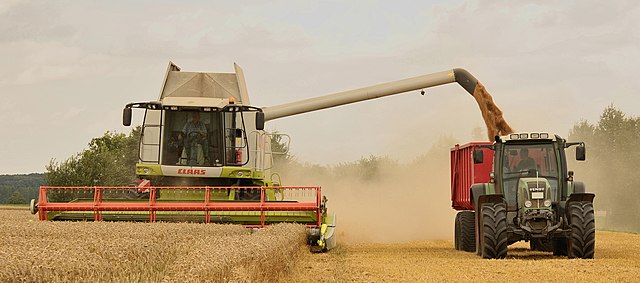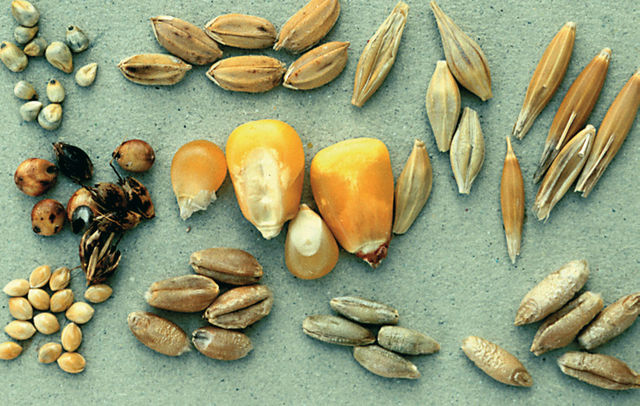A perennial grain is a grain crop that lives and remains productive for two or more years, rather than growing for only one season before harvest, like most grains and annual crops. While many fruit, nut and forage crops are long-lived perennial plants, all major grain crops presently used in large-scale agriculture are annuals or short-lived perennials grown as annuals. Scientists from several nations have argued that perennial versions of today's grain crops could be developed and that these perennial grains could make grain agriculture more sustainable.
Roots of intermediate wheatgrass, a perennial grain candidate compared to those of annual wheat (at left in each panel)
Thinopyrum intermedium (intermediate wheatgrass) first year nursery. A 4000-plant breeding nursery in the first year. Thinopyrum intermedium is being domesticated as a perennial grain crop.
Thinopyrum intermedium harvest. Individual plants of Thinopyrum intermedium are tied into bundles to be cut and threshed in order to select the plants with the highest yield and largest seed.
Thinopyrum intermedium crossing block. Thinopyrum intermedium selected for high grain yield and large seed size planted in a crossing block.
A grain is a small, hard, dry fruit (caryopsis) – with or without an attached hull layer – harvested for human or animal consumption. A grain crop is a grain-producing plant. The two main types of commercial grain crops are cereals and legumes.
Various food grains at a market in India.
Harvesting a cereal with a combine harvester accompanied by a tractor and trailer.
Cereal grains: (top) pearl millet, rice, barley (middle) sorghum, maize, oats (bottom) millet, wheat, rye, triticale
Cereal grain seeds clockwise from top-left: wheat, spelt, oat, barley.








